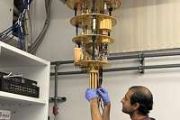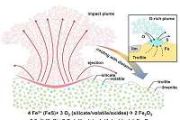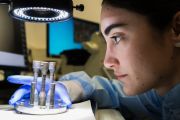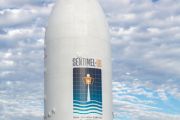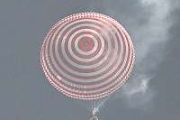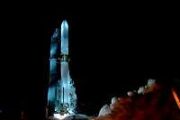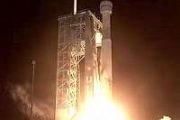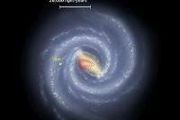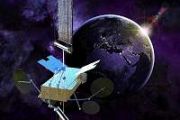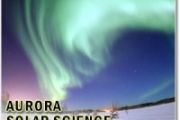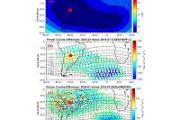
Copernical Team
The Dragon's Egg Too Tough To Crack
 Perseverance spent this week on Mars roving across the top of the Jezero fan- from Mount Meeker to Dream Lake- in search of yet another sample for return to Earth. This upper region known as Lobe K is expected to contain some of the most recently deposited materials within the delta sequence, providing the opportunity to place both upper and lower bounds on the timing of aqueous activity that bu
Perseverance spent this week on Mars roving across the top of the Jezero fan- from Mount Meeker to Dream Lake- in search of yet another sample for return to Earth. This upper region known as Lobe K is expected to contain some of the most recently deposited materials within the delta sequence, providing the opportunity to place both upper and lower bounds on the timing of aqueous activity that bu Phoenix's Red Planet Selfie
 NASA's Mars Phoenix Lander gathered images of itself for this selfie from June 5 through July 12, 2008, with its Surface Stereo Imager (SSI). This mosaic is made up of more than 100 different SSI pointings, with images taken through three different filters at each pointing. 15 years ago in August 2008, Phoenix completed its three-month mission studying Martian ice, soil, and atmosphere.
Th
NASA's Mars Phoenix Lander gathered images of itself for this selfie from June 5 through July 12, 2008, with its Surface Stereo Imager (SSI). This mosaic is made up of more than 100 different SSI pointings, with images taken through three different filters at each pointing. 15 years ago in August 2008, Phoenix completed its three-month mission studying Martian ice, soil, and atmosphere.
Th UAH to develop propulsion system to boost surveillance between Earth and Moon
 Dr. John Bennewitz, an assistant professor in the Department of Mechanical and Aerospace Engineering at The University of Alabama in Huntsville (UAH), has been awarded a $650,000, 45-month Air Force Office of Scientific Research (AFOSR) grant to develop an advanced propulsion system that will facilitate surveillance of space between the Earth and the Moon by the United States Space Force. The re
Dr. John Bennewitz, an assistant professor in the Department of Mechanical and Aerospace Engineering at The University of Alabama in Huntsville (UAH), has been awarded a $650,000, 45-month Air Force Office of Scientific Research (AFOSR) grant to develop an advanced propulsion system that will facilitate surveillance of space between the Earth and the Moon by the United States Space Force. The re China's commercial CERES-1 Y7 rocket launches 7 satellites
 China on Thursday launched the CERES-1 Y7 carrier rocket from the Jiuquan Satellite Launch Center in northwest China, sending seven satellites into a planned orbit.
The commercial rocket blasted off at 12:03 p.m. (Beijing Time) from the launch site, carrying seven satellites, including the Xiguang-1 01 satellite.
Xiguang-1 01, equipped with hyperspectral, infrared, and panchromatic c
China on Thursday launched the CERES-1 Y7 carrier rocket from the Jiuquan Satellite Launch Center in northwest China, sending seven satellites into a planned orbit.
The commercial rocket blasted off at 12:03 p.m. (Beijing Time) from the launch site, carrying seven satellites, including the Xiguang-1 01 satellite.
Xiguang-1 01, equipped with hyperspectral, infrared, and panchromatic c ICEYE US receives first NASA commercial smallsat data task order
 ICEYE US Inc, renowned for its persistent Earth monitoring through radar imaging satellites, has secured its inaugural Task Order as a part of a previously announced Blanket Purchase Agreement (BPA) with NASA. This accord grants NASA the capacity to procure and assess ICEYE's synthetic-aperture radar (SAR) data. This evaluation is intended to serve the scientific and academic spheres, assisting
ICEYE US Inc, renowned for its persistent Earth monitoring through radar imaging satellites, has secured its inaugural Task Order as a part of a previously announced Blanket Purchase Agreement (BPA) with NASA. This accord grants NASA the capacity to procure and assess ICEYE's synthetic-aperture radar (SAR) data. This evaluation is intended to serve the scientific and academic spheres, assisting RTX and Blue Canyon unveil new high-capacity XB16 CubeSat
 In response to the ever-growing demand in the satellite industry for greater payload size, weight, and power (SWaP), RTX's satellite manufacturer arm, Blue Canyon Technologies (BCT), has recently unveiled the XB16 CubeSat. This new offering stands as the most sizable form factor within its current CubeSat product portfolio.
The XB16 CubeSat is a testament to the technological strides the i
In response to the ever-growing demand in the satellite industry for greater payload size, weight, and power (SWaP), RTX's satellite manufacturer arm, Blue Canyon Technologies (BCT), has recently unveiled the XB16 CubeSat. This new offering stands as the most sizable form factor within its current CubeSat product portfolio.
The XB16 CubeSat is a testament to the technological strides the i De-orbiting PS4 stage in PSLV-C56 Mission
 The Indian Space Research Organisation (ISRO) accomplished a milestone in its latest mission PSLV-C56. Not only did the PSLV-C56 vehicle precisely place the DS-SAR satellite and six accompanying satellites into a 536 km circular Low Earth Orbit (LEO) with a 5-degree inclination, but it also took commendable steps in addressing the rising concern of space debris.
Within 20 minutes of lift-o
The Indian Space Research Organisation (ISRO) accomplished a milestone in its latest mission PSLV-C56. Not only did the PSLV-C56 vehicle precisely place the DS-SAR satellite and six accompanying satellites into a 536 km circular Low Earth Orbit (LEO) with a 5-degree inclination, but it also took commendable steps in addressing the rising concern of space debris.
Within 20 minutes of lift-o Airgain expands line of ultra-low-profile RECON13 5G rugged antenna
 Airgain, Inc. (NASDAQ: AIRG), a provider of wireless connectivity solutions globally, has introduced the RECON13 5G antenna, adding to its line of rugged outdoor 5G antennas. The RECON13 is specifically tailored for fleet and public safety vehicles, marking Airgain's latest venture into ultra-low-profile antennas intended for applications needing optimal connectivity in compact spaces.
The
Airgain, Inc. (NASDAQ: AIRG), a provider of wireless connectivity solutions globally, has introduced the RECON13 5G antenna, adding to its line of rugged outdoor 5G antennas. The RECON13 is specifically tailored for fleet and public safety vehicles, marking Airgain's latest venture into ultra-low-profile antennas intended for applications needing optimal connectivity in compact spaces.
The USTC scientists discover quasar-induced superbubbles
 In groundbreaking research led by Prof. LIU Guilin and Prof. HE Zhicheng of the University of Science and Technology of China (USTC) under the aegis of the Chinese Academy of Sciences (CAS), the existence of superbubble pairs instigated by quasar-induced outflows in three red quasars has been confirmed. This revolutionary study has been unveiled in the journal Science Advances.
A prevailin
In groundbreaking research led by Prof. LIU Guilin and Prof. HE Zhicheng of the University of Science and Technology of China (USTC) under the aegis of the Chinese Academy of Sciences (CAS), the existence of superbubble pairs instigated by quasar-induced outflows in three red quasars has been confirmed. This revolutionary study has been unveiled in the journal Science Advances.
A prevailin Pulsar Fusion forms partnership with University of Michigan for electric propulsion
 Electric propulsion, with a specific focus on Hall effect thrusters, has long been recognized as a foundational technology for space missions. Recognizing its potential, the UK Space Agency has recently announced a collaboration with the Plasma dynamics and Electric Propulsion Lab at the University of Michigan, one of the premier Hall thruster research centres worldwide.
This international
Electric propulsion, with a specific focus on Hall effect thrusters, has long been recognized as a foundational technology for space missions. Recognizing its potential, the UK Space Agency has recently announced a collaboration with the Plasma dynamics and Electric Propulsion Lab at the University of Michigan, one of the premier Hall thruster research centres worldwide.
This international 




